Suppose I have a data frame with records (Value) for 100 subjects
(Subject), which were measured with three different methods
(Method). Now I would like to plot Value from each method against
each other, so in this case "base-new", "base-edge" and "new-edge". How
can I do this in ggplot2 based on a single numeric variable using
facet_wrap?
dummy <- data.frame(Value = c(rnorm(100, mean = 35, sd = 2),
rnorm(100, mean = 47, sd = 2),
rnorm(100, mean = 28, sd = 1)),
Method = c(rep("base", times = 100),
rep("new", times = 100),
rep("edge", times = 100)),
Subject = rep(paste0("M", seq_len(100)), times = 3))
str(dummy)
## 'data.frame': 300 obs. of 3 variables:
## $ Value : num 32.9 32.2 37 36.6 33 ...
## $ Method : Factor w/ 3 levels "base","edge",..: 1 1 1 1 1 1 1 1 1 1 ...
## $ Subject: Factor w/ 100 levels "M1","M10","M100",..: 1 13 24 35 46 57 68 79 90 2 ...
This code does not work and is just meant as an illustration for what I would like to do:
library("ggplot2")
ggplot(dummy, aes(Value)) +
geom_point() +
facet_wrap(~ Method)
Edit
This would be my solution using base R:
opar <- par()
par(mfrow = c(1, 3))
plot(dummy[dummy$Method == "base", "Value"],
dummy[dummy$Method == "new", "Value"],
xlab = "base", ylab = "new")
plot(dummy[dummy$Method == "base", "Value"],
dummy[dummy$Method == "edge", "Value"],
xlab = "base", ylab = "edge")
plot(dummy[dummy$Method == "new", "Value"],
dummy[dummy$Method == "edge", "Value"],
xlab = "new", ylab = "edge")
par(opar)

